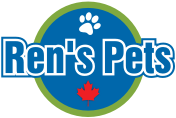Grain Free Diet For Cats
In the past people used to feed their cats with anything they had on hand, like things such as bread, milk, raw meat, and even leftovers. Something that well-informed pet owners don’t even think about today. There weren’t a lot of options for cat food in the market, and people really didn’t know any better. With the progress in the pet food industry, we have learned about the danger of feeding table scraps to our pets and shifted to dry foods and other new options that are now available in the market.
We used to think the food we were feeding our cats had all the nutritional values they needed in order to live a healthy life. But instead, we were feeding our cats an entirely grain based product. Most manufacturers used ingredients like corn, rice, oats, and wheat excessively to cut costs and produce a cheaper product.
Since then, the pet food industry has evolved so that we can buy the appropriate food for each dietary need, and restriction for our pet. Every ingredient is adequately listed on the labels and packages, and we can track all nutrients to let our furry friends live a long and healthy life.
Most cats don’t require a grain-free diet, but just like it is for us, some of them are born with allergies or develop them over time. This can cause sensitivity to food they would normally eat without a problem. We have to observe any changes in the cat's behaviours to determine any possible food allergy. Cats with a vet-diagnosed grain allergy usually show symptoms such as coughing, bald patches, excessive grooming, excessive hair loss, flatulence, inflamed skin, itchiness, hot spots, sores, scabs, and/or weight loss. In the worst cases, some cats can even develop chronic vomiting, diarrhea, and may also have seizures.
Nowadays, if your cat is diagnosed with a grain allergy, there are several options of brands and types of grain free food to feed your kitty safely. You can feed your cat with a variety of dry food, wet food, treats, patés, and purees, that won’t trigger their allergies. The pet food industry is aware of the dietary allergies pets are developing and how pet parents are concerned about feeding them the right food.
One thing that pet owners who have pets with grain allergies must understand is that grain-free pet food doesn’t necessarily mean that they are low in carbohydrates or high in protein. The grains are merely replaced by other ingredients such as carrots, cranberries, peas, and/or potatoes. The grains are not always substituted by meat. Because of that, the caloric intake and nutritional value are very similar to the average diets.
The best way to make sure that your cat is eating the best food for their best health is to read all food labels and packages to make sure they are made with real ingredients that your vet recommends. Dietary restrictions are very serious and shouldn’t be taken lightly, you should always make sure that the ingredients in your cat’s food is recommended by a veterinarian.
